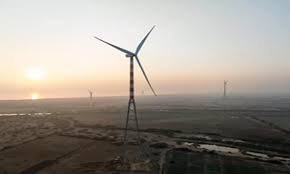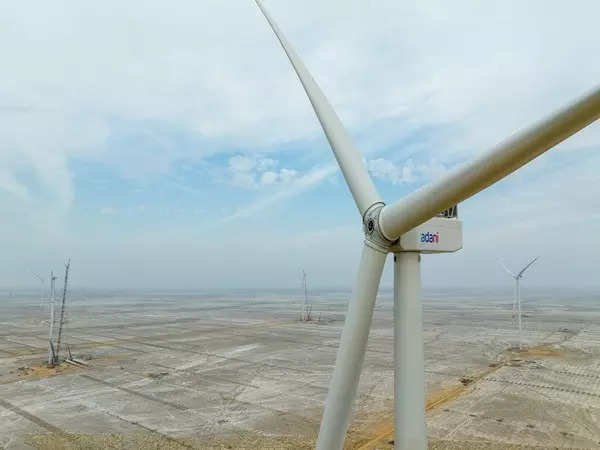Adani Green Energy Operationalises 126 MW Wind Power Plant in Gujarat
Adani Green Energy Limited (AGEL) has recently operationalized a 126 MW wind power plant in Kutch, Gujarat. This plant is a significant addition to India’s renewable energy sector and marks a step forward in the country’s commitment to clean energy initiatives.
The wind power plant is located in Kutch, Gujarat, an area known for its favorable wind conditions, making it an ideal location for wind energy projects. With a capacity of 126 MW, the plant is capable of generating a substantial amount of clean energy, contributing to reducing carbon emissions and mitigating the impact of climate change.
AGEL, a part of the Adani Group, is one of the leading renewable energy companies in India. The operationalization of this wind power plant underscores AGEL’s commitment to expanding its renewable energy portfolio and supporting India’s transition towards sustainable energy sources.
The commissioning of this wind power plant further solidifies Gujarat’s position as a key player in the renewable energy sector. Gujarat has been at the forefront of India’s renewable energy revolution, leveraging its natural resources to harness clean energy and reduce dependence on fossil fuels.
The Indian government has set ambitious targets for increasing the share of renewable energy in the country’s energy mix. Projects like the 126 MW wind power plant in Gujarat are essential for achieving these targets and advancing India’s renewable energy goals.

Why this News is Important
The operationalization of the wind power plant signifies a substantial contribution to India’s clean energy goals, reducing carbon emissions and promoting sustainable development.
Investments in renewable energy projects like this one create job opportunities and stimulate economic growth, benefiting local communities and the broader economy.
Increasing reliance on renewable energy sources enhances energy security by reducing dependence on fossil fuels, which are subject to price volatility and geopolitical risks.
Utilizing wind energy helps mitigate the adverse effects of climate change by reducing greenhouse gas emissions and air pollution, leading to a healthier environment.
The development and operationalization of such large-scale renewable energy projects showcase advancements in renewable energy technologies, driving innovation and efficiency in the sector.
Historical Context
In recent years, India has made significant strides in expanding its renewable energy capacity. The government has introduced various initiatives and policies to promote renewable energy adoption, aiming to reduce the country’s carbon footprint and meet its international climate commitments. Gujarat, with its abundant wind resources and favorable policy environment, has emerged as a hub for renewable energy projects. The operationalization of the 126 MW wind power plant in Kutch is part of a broader effort to accelerate the transition towards clean energy in India.
5 Key Takeaways from “Adani Green Energy Operationalises 126 MW Wind Power Plant in Gujarat”
| Serial Number | Key Takeaway |
|---|---|
| 1. | AGEL has operationalized a 126 MW wind power plant in Gujarat. |
| 2. | Gujarat’s favorable wind conditions make it an ideal location for renewable energy projects. |
| 3. | The plant contributes to India’s renewable energy goals and reduces carbon emissions. |
| 4. | AGEL’s investment reflects its commitment to expanding its renewable energy portfolio. |
| 5. | The project signifies progress towards India’s clean energy objectives and enhances energy security. |
Important FAQs for Students from this News
Q: What is the capacity of the wind power plant operationalized by Adani Green Energy in Gujarat?
A: The wind power plant has a capacity of 126 MW.
Q: Where is the location of this wind power plant?
A: The wind power plant is located in Gujarat, India.
Q: Who is the company behind the operationalization of this wind power plant?
A: Adani Green Energy is the company responsible for operationalizing this wind power plant.
Q: How does the operationalization of this wind power plant contribute to renewable energy goals?
A: It adds to the renewable energy capacity of the region, contributing towards sustainable energy goals.
Q: What are the potential benefits of this wind power plant for the local community and economy?
A: The operationalization of this wind power plant can lead to job creation, economic growth, and reduced reliance on non-renewable energy sources in the region.
Some Important Current Affairs Links














